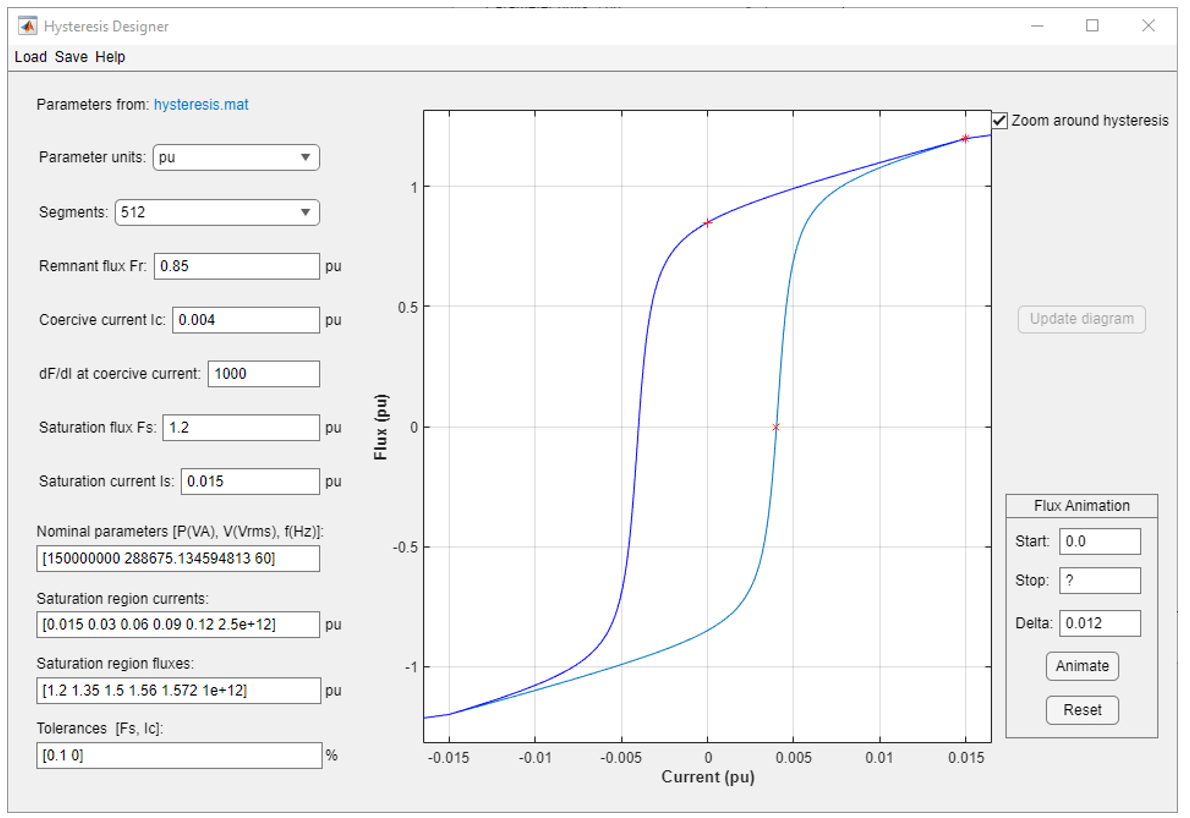Hysteresis Designer
(To be removed) View and edit hysteresis characteristic for saturable core of Saturable Transformer blocks
Since R2021b
The Specialized Power Systems library will be removed in R2026a. Use the Simscape™ Electrical™ blocks and functions instead. For more information on updating your models, see Upgrade Specialized Power System Models to use Simscape Electrical Blocks.
Description
The Hysteresis Designer app allows you to view and edit a hysteresis characteristic for the saturable core of the Multi-Winding Transformer, Saturable Transformer, Three-Phase Transformer (Two Windings), and Three-Phase Transformer (Three Windings) blocks. The hysteresis characteristic includes the saturation region located at the limits of the hysteresis loop.
A default hysteresis characteristic displays when you open the app, but you can build as many hysteresis characteristics as you want and save them in different MAT files. You can use the same characteristic for all your transformer blocks, or you can use different characteristics for each transformer block in the circuit. In the mask of a transformer block, select Simulate hysteresis and specify a MAT file to use.
The Hysteresis Designer app includes a flux animation tool that can visualize how by Simscape Electrical Specialized Power Systems software performs the simulation of the hysteresis. This is an optional tool that is not necessary for the model parameterization. The app calculates the initial trajectory according to the defined hysteresis characteristic. The tool assumes that the last reversal point before starting flux is located on the major loop. The operating point travels until the defined stop flux.
Open the Hysteresis Designer App
MATLAB® command prompt: Enter
power_hysteresisIn the Powergui block, click Hysteresis Designer
Parameters
Version History
Introduced in R2021b
